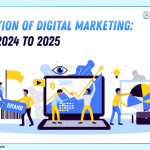How to Create a Responsive Landing Page

When it comes to creating a website, the landing page is often the first thing that visitors see. It’s the face of your brand, and it’s crucial to make it stand out and leave a positive impression. But with the increase in mobile usage, it’s not enough to simply have a good-looking landing page. It also needs to be responsive, meaning that it adjusts to fit the screen of any device. In this blog post, we’ll be discussing how to create a responsive landing page that stands out and drives conversions.
Key Elements of a Successful Landing Page
A Clear and Compelling Value Proposition
The value proposition is a statement that clearly communicates the benefits and unique features of your product or service. It should prominently displayed on your landing pages and should be easy for visitors to understand.
A Prominent Call-To-Action (CTA)
The CTA is the action you want visitors to take on your landing page. It could be purchasing a product, signing up for a newsletter, or filling out a form for more information. Your CTA should be clear, compelling, and prominently displayed on the page.
Social Proof
Social proof is the idea that people are more likely to take action if they see that others have already done so. This can include customer testimonials, social media followers, or media mentions. Incorporating social proof on your landing pages can help increase conversions by showing visitors that others trust and value your product or service.
Trust Indicators
Trust indicators are elements on your landing page that help build trust and credibility with visitors. These can include security badges, money-back guarantees, and certifications. Including trust indicators on your landing pages can help increase conversions by assuring visitors that your product or service is reliable and trustworthy.
The Importance of Responsive Design
Responsive design is the practice of designing a website so that it looks and functions correctly on a variety of devices and screen sizes. This includes desktop computers, tablets, and smartphones. With the increasing number of people accessing the internet on mobile devices, it is essential that your landing page is responsive in order to provide a positive user experience and maximize conversions.
How to Create a Responsive Landing Page
There are a few key considerations when creating a responsive landing pages:
- Use a responsive layout: This means that the layout of your page adjusts to fit the screen size of the device it is being viewed on.
- Use responsive images: Images should be sized in a way that they look clear and are easy to view on any device.
- Consider the user experience: The user experience should be seamless and intuitive, regardless of the device being used. This includes things like the size of buttons and the distance between elements on the page.
Best Practices for Creating and Optimizing Your Landing Pages
Keep the Landing Page Simple
A successful landing page should be focused and streamlined, with a clear and specific purpose. This means keeping distractions to a minimum and eliminating unnecessary elements that could distract or confuse visitors.
Use Strong Headlines
Your headline should grab the attention of visitors and clearly communicate the value proposition of your product or service. Use action-orient language and make sure the headline is prominently display on the page.
Use Clean and Professional Design
The design of your landing page should be professional and polished, with clean lines and an uncluttered layout. Use high-quality images and avoid using too many different fonts or colors.






